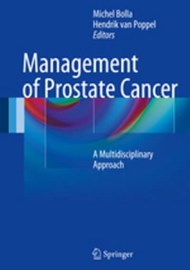This is an excellent textbook which comprehensively covers the vast field of prostate cancer. The editors, who have co-ordinated phase III European Organisation for Research and Treatment of Cancer (EORTC) trials, have brought together a large array of well-known international experts in the field to deliver an exhaustive review of the current evidence on the subject.
They have been able to achieve within a relatively short 422 pages by splitting the text into 27 chapters which I found easy to read. Each chapter is well illustrated by colour diagrams and useful comparative tables which, if you are searching for specific information, can be referenced at a glance. Tables such as those on imaging, and the one comparing the key findings from trials on the four principal immunotherapy agents for castrate resistant prostate cancer are good examples of this.
From basic concepts such as epidemiology, anatomy, tumour biology, and chemoprevention, the text works through careful appraisals of the role of individual and mass screening, the diagnostic pathway, the role of active surveillance and each of the treatment options, including open and robotic laparoscopic radical prostatectomy, the various forms of radiation therapy, high-intensity focused ultrasound, cryotherapy, hormonal therapy, and targeted therapies and vaccination. Although this is a rapidly changing field and so information in textbooks rapidly undergo attrition, this is a state of the art update on current knowledge in a format that is easy to pick up and read.
The chapters on imaging, aptly named ‘an ongoing change of paradigm’, and that on the diagnosis, clinical workup and tumour, node, metastasis (TNM) classification contain most of the information that is regularly discussed at multidisciplinary team meetings, and are particularly useful for trainees. The chapter on chemoprevention contains common questions asked by patients on dietary and other factors. Each topic goes into a very useful level of detail, with clear referencing to support it. There is a useful review of interpretation of the statistical analyses from trial data and how this applies to our own practice.
I thoroughly recommend this book for personal collections and libraries, for both trainees and experienced clinicians.





